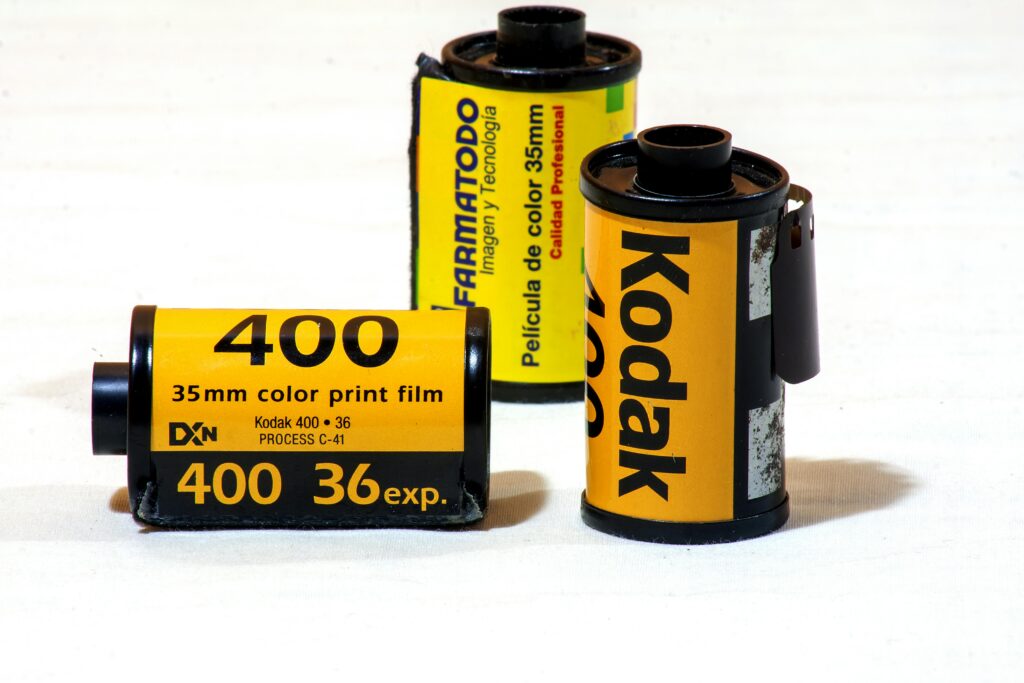Kodak was one of the most iconic companies of the 20th century, dominating the photography industry for decades. However, despite having pioneered the development of digital photography, the company ended up in bankruptcy in 2012. How could a leading company in its sector fall in such a way? Kodak’s story is a warning to all companies: innovation is not an option, it is a necessity.
Kodak’s rise and dominance in photography
Since its founding in 1888, Kodak revolutionized photography with the introduction of the film camera and its famous slogan “You press the button, we do the rest”. For decades, the company established itself as the absolute leader in the industry, with a market share exceeding 80% in the 1970s. Its business model, based on the sale of film and photo development, was extremely profitable.
However, the arrival of digital technology marked the beginning of the end for Kodak.
The Kodak Paradox: Inventing digital photography and not taking advantage of it
One of the most ironic aspects of Kodak’s downfall is that the company was the first to develop digital technology. In 1975, a Kodak engineer, Steve Sasson, created the first digital camera. However, the company’s management dismissed the idea for fear of cannibalizing its core photographic film business.
This strategic error proved fatal. While Kodak ignored digital photography, companies like Sony, Canon and Nikon seized the opportunity and became leaders in the new market. By the time Kodak tried to adapt, it was too late.
Lessons for companies from the Kodak case
The Kodak case leaves valuable lessons for any company that wants to stay relevant in an ever-changing world:
1. Innovation can’t wait
Ignoring a new technology for fear of affecting traditional business is a costly mistake. Companies must be willing to evolve before it is too late.
2. Listen to the market and anticipate changes.
Consumers were embracing digital photography, but Kodak insisted on its traditional business model. Adapting to market needs is key to survival.
3. Diversification and business agility
Companies must diversify their products and services to reduce the risk of obsolescence. Rigidity in business strategy can be lethal.
4. Accept change as an opportunity
Digital transformation is not a threat, but an opportunity to innovate and generate new sources of revenue. Companies that have managed to reinvent themselves, such as Netflix or Amazon, have shown that adaptability is essential for success.

ENEB and business management and leadership education
At ENEB, we understand the importance of innovation and business strategy to avoid mistakes like Kodak. Our programs are designed to prepare the leaders of the future with the necessary tools to manage change and foster innovation within their companies. If you want to learn how to make strategic decisions and keep your company competitive in the marketplace, we invite you to learn about our training offerings.
To learn more about the Kodak case and the lessons of business innovation, you can read this article: The failure of Kodak and its lesson for business.
Conclusion
The Kodak case is a reminder that the success of the past does not guarantee the future. Lack of vision and resistance to change can be fatal to any organization.
Companies that want to stay on top must be willing to constantly innovate, listen to their market and adapt to new trends. In a world where technology is advancing by leaps and bounds, only those companies that embrace change will be able to ensure their long-term survival and success. If you want to develop your skills in business strategy and leadership, ENEB is the ideal place to enhance your professional growth and ensure that your company does not make the mistakes of the past.




